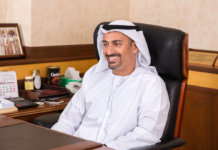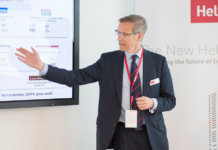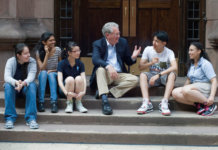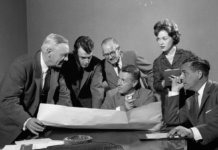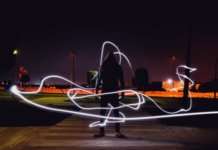To become a full-time artist may seem like a romantic notion but the reality of an artistic career holds hard work, dedication and a great deal of integrity. Being and artist and having to live by one’s art is not easy and demands as much entrepreneurial zeal as any other endeavour.
The 35 year-old French-Tunisian artist eL Seed, seems to have what it takes to strike the balance. He left his desk job as a consultant to pursue his career as an artist full time and has never looked back. Ever since he has gained fame for his paintings and art installations that demonstrate an innovative approach to Arabic calligraphy through the use of spray paint, a technique more commonly known as “calligrafitti”. With his works featured in TED Talks, on CNN and widely spread on social media it looks like the young Tunisian has mastered that elusive job description of “the artist”. But despite his rapid success, few know his real name or would recognise him on the street. Many however, know his work.
eL Seed is well known for his 2012 painting of a minaret of the Jara Mosque in the southern Tunisian city of Gabes which included a passage from the Quran. For his recent work in Cairo’s Coptic neighbourhood Manshiyat Nasr where he used multiple house facades as a canvas for a large scale calligraffiti art installation, the artist has received international acclaim. His work has been shown in exhibitions in Berlin, Chicago, Dubai, Paris, and São Paulo, and he has been commissioned to do murals in major centres such as Melbourne, London and Toronto.
Tharawat Magazine spoke with eL Seed to discuss his journey from a desk job to a full-time artistic career, why humanity is at the core of his work, and why art must always come first.
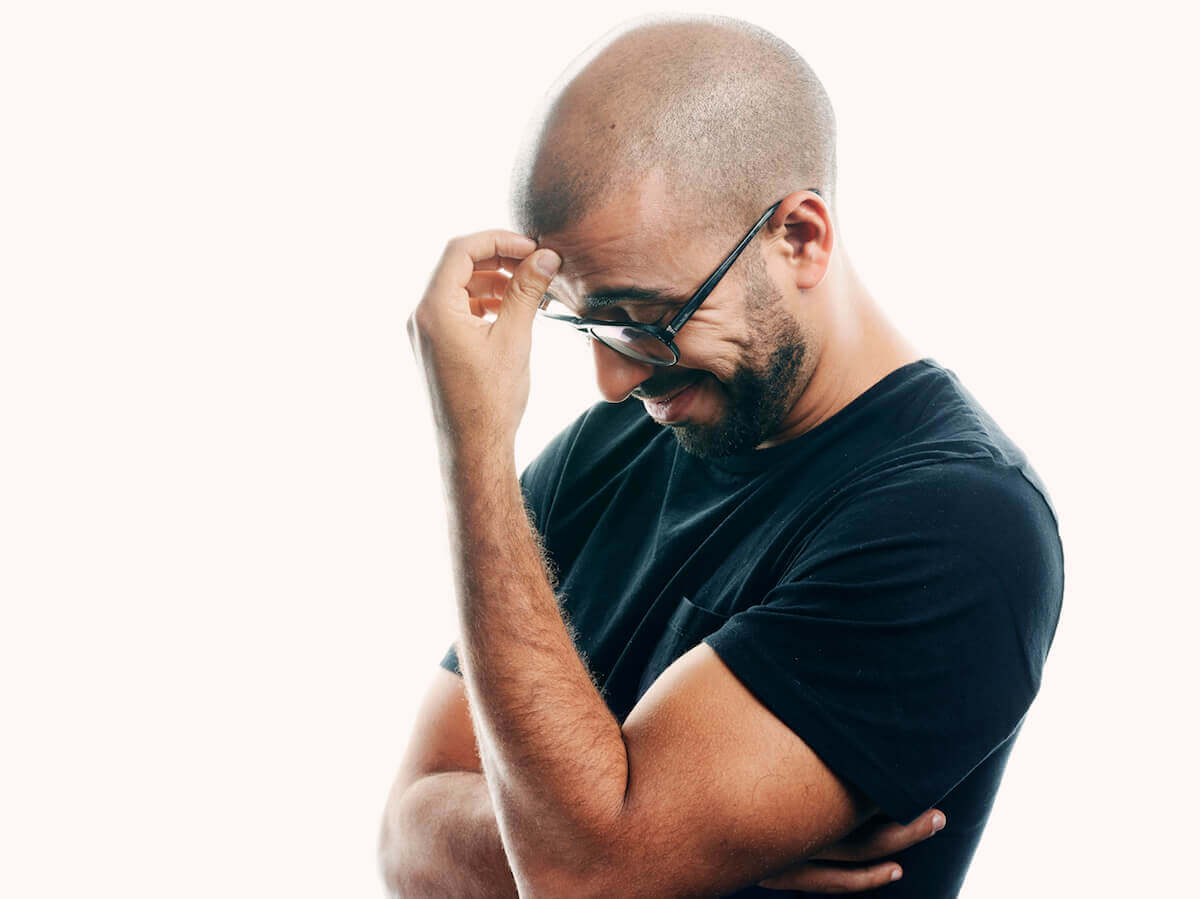
When were the first inklings that you wanted to be an artist?
I have been painting and drawing since I was a kid. When I entered my Masters degree in marketing and business Supply Chain Management, I took part in this psychology test. When my interview was done the psychologist administering the test looked at me and said ‘What are you doing here? You’re not into this. You’re a creative person, you shouldn’t be here’. For me it was a kind of trigger. I had always wanted to do something creative but I didn’t know what that was exactly. Then when I discovered calligraphy, I just knew that was the thing, that was my thing.
But you didn’t start your artistic career out of university, you went into the regular working world first. What was that like and how did you make the transition into being a full-time artist?
I used to be a business consultant. I studied business and marketing, I have a Masters degree in supply chain management and a Bachelor degree in marketing. I worked for a while in New York, and then I moved to Montreal and I just felt it was not for me. I would always go to work feeling depressed. The whole week I would just wait for the weekend because Saturday and Sunday was the time when I would go out and paint. I just needed something to pull myself out of this business oppression. And then through social media, step-by-step, people started to get interested in what I was doing. People would invite me to come and paint for a fee and I knew, ‘this is it’. If you know how to manage it, you can make money from something that you love. But the goal was never to make money, the goal was to keep doing what I am passionate about. This is still the most important thing and why I do it. Over time, I was just feeling that, in the balance between my focus as a consultant and my passion for my art, the scales were being tipped in favour of my heart. So about seven years ago, the day before my daughter was born, I just decided to quit my job and to focus on becoming eL Seed.
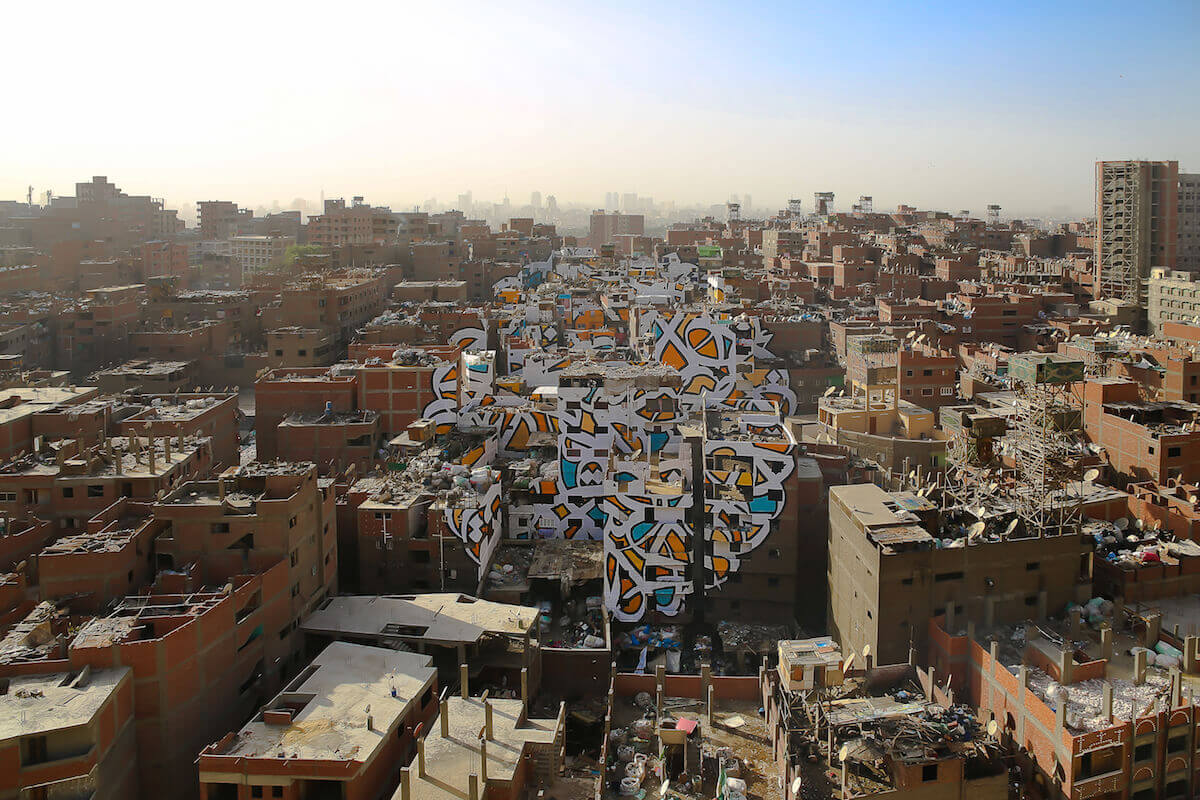
What was that like in the beginning? Were you concerned about your decision?
Actually everybody around me freaked out, but really I was quite okay. I was just thinking ‘How am my going to do this? How am I going to manage myself?’ I just tried to make sure every commission I signed lead me to another commission. I decided to work on my communication, work on my portfolio making sure that I had something to say, that it wasn’t just decoration. Really how you would start any business. I remember in 2010, I booked my flight to Dubai and I didn’t know anybody. So I just invited myself to events trying to get on all of the guest lists. For one week I just set out to connect with everybody that I could. That was very important to gain momentum.
When did you open your studio in Dubai?
I moved into my studio in Dubai in 2013. I did an artist residency in France but I never had a studio there. There were people who had a gallery and I knew them so they let me use it when I was in Paris. In Montreal my studio was actually my home. So for me taking that step and setting up in Dubai was huge. It’s just incredible to go to a place and open the door and all my artworks are there in one space. I think this is a huge step for me, it’s a dream come true.
You come from a business background and now do are a full-time artist. How much of what you do is business and does your professional background still come in handy?
Of course, it’s a business like any other. We have a process in the company. Tthe company is built in a way that everything around me allows me to focus on my creativity. I set up everything so my business doesn’t affect the artistic process. I act as a director of the company because I set goals and targets for my team and then we have meetings where we decide what direction we should go. Everything is structured so it is possible for me to remain an artist while the business side is looked after by the people who work with me. The more we grow, the more we will need to put processes in place. It’s a quality control process, from the creation of the art, the wrapping, the shipping, to the certificate of authenticity, everything is designed to make sure that it reflects how I want my pieces to be perceived. When I come up with an idea, my team works to make sure the idea can come to life. My team is amazing at this, and it makes me feel free to pursue the creative process.
[ms-protect-content id=”4069,4129″]
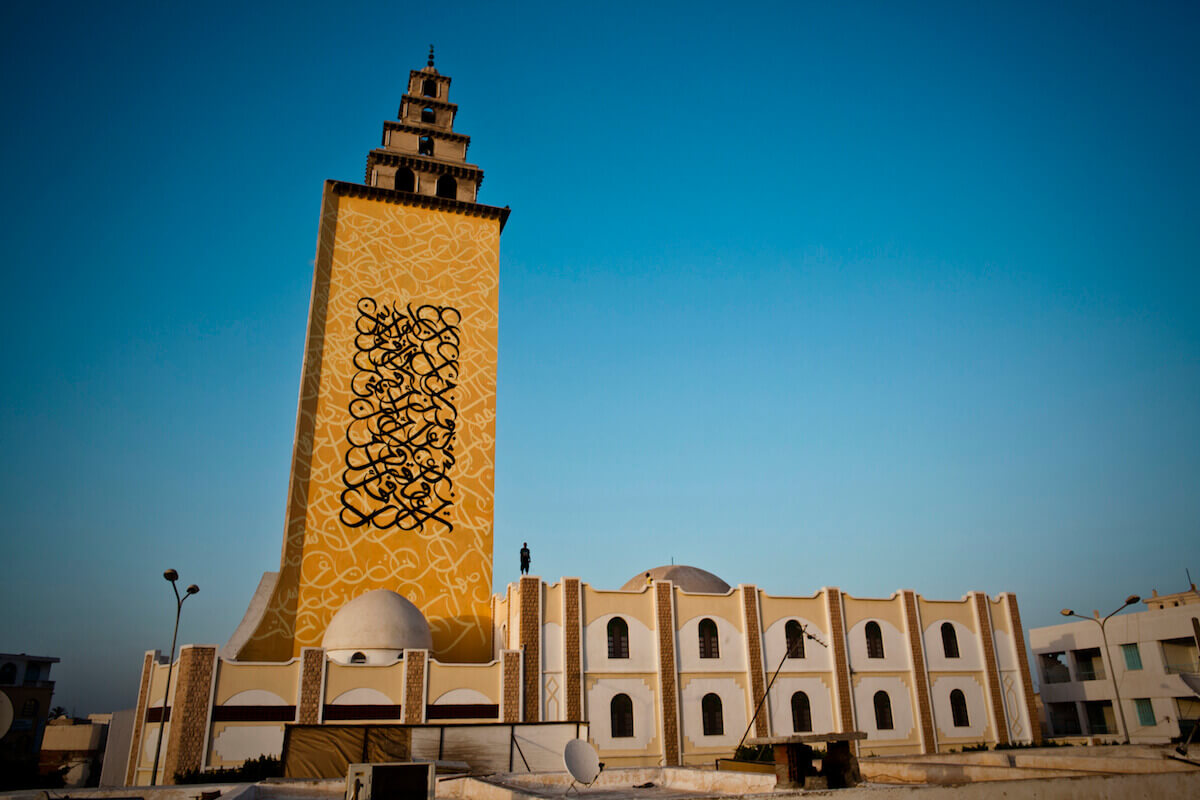
But many of your projects are not commissioned. Your world-famous project in Cairo’s Coptic neighbourhood Manshiyat Nasr was something you undertook on your own initiative. Would you call what you do social entrepreneurship or do you just feel that as an artist it’s part of your philosophy?
I think this is just the way I was brought up by my parents. You have some artists who don’t care about the social part of it. They just follow their passions. But for me, social ultimately means human. And what I do is to share the human experience. When you are an artist there are people who may say “You’re not an artist, you’re just a marketer. You’re just trying to find out who’s going to like your art.” If that’s really what you’re doing as an artist, you’re not creating art you’re just working in branding. I do my thing and some people like it and some people don’t. I believe when you create art that you feel good about, other people will feel good about it too. So I don’t consider myself a social entrepreneur. I am an artist. I listen to my heart.
Do you find the stigma that attach the word artist as not being a serious job a global phenomenon or something that is particular to the Middle East?
I think it’s a global perception, but it is prevalent in the Middle East. When you’re an artist people seem to assume that you’re not really working and that you go out every night. When I tell people about my crazy schedule, the travelling, the lack of sleep and the quantity of output we produce, they have trouble believing it. I think slowly people are starting to change their views and I know social media helps a lot because it’s giving us a kind of exposure that we have never had before. That’s why I like to go to schools and speak to students or have them come into the studio so we can interact and let them know that if you work hard, you can become an artist. But you have to give it all you’ve got, it’s not easy.
You have an anonymity most artists at your level do not. Nor do you seem the seek the spotlight for yourself. By not putting your face out there more, do you feel that you’re doing your art a disservice?
I don’t care about the fame. I like it when people appreciate my work but most times, people don’t recognise my face when I go to events. For me, this is not about fame, that is not what I’m looking for. I don’t know maybe I might change at some point but I feel like this is the way I want to communicate my work. It’s the same idea with this selfie-trend everybody is into. You’re standing in front of the most beautiful monument in the world and what do you do? You put your face in front of it to take a picture. It’s like people are saying ‘I’m more important than the historic monument that is behind me.’ The same applies to my work. It’s not about me, it’s about the art.
[/ms-protect-content]






